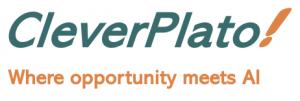
CleverPlato Enables Business to Benefit from Human-AI Collaboration
CleverPlato AI Marketplace provides businesses with AI products and services to enable effective Human-AI collaboration.
VANCOUVER, BRITISH COLUMBIA, CANADA, April 23, 2024 /EINPresswire.com/ -- CleverPlato launched its AI-focused marketplace across North America during April 2024. The platform focuses on artificial intelligence (AI) products and services for businesses and professionals.
CleverPlato provides two platforms. First, CleverPlato AI Magazine is aimed at informing and educating business and professionals on the application of AI in their organizations. Second, CleverPlato Marketplace provides access to AI-related products and services across various business functions.
“As artificial intelligence (AI) continues to evolve and integrate into various business sectors, the concept of human-AI collaboration becomes increasingly significant” says CEO of CleverPlato, Phillip Loetter. “This partnership when harnessed correctly, can lead to unprecedented levels of productivity, innovation and job satisfaction”, says Loetter.
Realizing this potential requires careful consideration of potential collaboration models that govern the interaction between employees and AI systems. The models include:
1. The Complementary Model
The complementary model is based on the principle of leveraging the unique strengths of both employees and AI. In this model, AI systems handle tasks that involve processing large volumes of data, pattern recognition and executing repetitive tasks with high precision. Meanwhile, employees focus on activities that require emotional intelligence, creativity, critical thinking and complex problem-solving. This division of labor allows for a synergy where each party complements the other, leading to enhanced efficiency and more innovative solutions.
2. The Augmentation Model
In the augmentation model, AI acts as a direct support system to enhance employee capabilities, rather than taking over tasks completely. AI tools provide insights, recommendations or augmented reality environments to assist employees in making better decisions, designing more creative solutions or performing physical tasks with greater precision. This model emphasizes the enhancement of human skills and decision-making rather than replacement.
3. The Interactive Model
The interactive model focuses on the dynamic interaction between employees and AI, where both parties can learn from each other and adapt over time. This could involve employee training AI systems through reinforcement learning, providing feedback on AI-generated solutions, or AI systems suggesting new methods or information that employees may not have considered. This model is particularly relevant in creative industries or complex problem-solving scenarios where iterative feedback loops can lead to innovative outcomes.
4. The Autonomous Model
While not strictly a collaboration model in the traditional sense, the autonomous model involves AI systems operating independently in certain tasks or decisions, with employees setting the parameters and goals. This model is applicable in situations where speed and efficiency are paramount, and AI can make decisions faster and more accurately than employees. However, human oversight remains crucial to monitor performance and intervene when necessary.
The successful implementation of human-AI collaboration models requires:
1. Clear Definition of Roles: Organizations must clearly define the roles of employees and AI in each model to prevent overlap and ensure both are utilized to their full potential.
2. Continuous Training and Development: Both AI systems and employees should undergo continuous training to adapt to evolving capabilities and workplace needs.
3. Ethical Considerations and Bias Mitigation: Implementing any collaboration model must include addressing ethical considerations, particularly regarding data privacy, security and bias mitigation in AI algorithms.
4. Open Communication and Feedback Loops: Encouraging open communication and establishing feedback loops between employees and AI systems can enhance collaboration and adjust strategies as needed.
“Human-AI collaboration models offer a roadmap for integrating AI into the workplace in a way that enhances employee capabilities. The future of work lies in the collaboration between humans and AI. By complementing each other’s capabilities, employees can achieve goals that were once considered beyond reach” says Nazier Adams, Head of Technology at CleverPlato.
About CleverPlato:
CleverPlato is devoted to Artificial Intelligence (AI) products and services for businesses and professionals. Through its dual platforms, CleverPlato AI Marketplace and CleverPlato AI Magazine, the company aims to inform, educate and empower businesses for the successful integration of AI into their operations. CleverPlato is based in Vancouver, Canada and a brand of PGC – Piilo Group Canada.
Phil Loetter
CleverPlato
info@cleverplato.com
Visit us on social media:
Twitter
LinkedIn
YouTube
CleverPlato AI Marketplace and Magazine Overview
EIN Presswire does not exercise editorial control over third-party content provided, uploaded, published, or distributed by users of EIN Presswire. We are a distributor, not a publisher, of 3rd party content. Such content may contain the views, opinions, statements, offers, and other material of the respective users, suppliers, participants, or authors.




